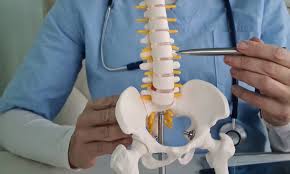Back pain is one of the most common medical issues in the United States, and for many people, damaged spinal discs are the cause. Whether the result of injury, aging, or degenerative conditions, spinal disc problems can lead to chronic pain, reduced mobility, and a lower quality of life. Fortunately, modern Spinal disc repair techniques are providing patients with effective, minimally invasive solutions that help restore function and relieve pain.
Here are five key benefits of today’s advanced spinal disc repair procedures.
1. Minimally Invasive Procedures with Faster Recovery
One of the most significant advancements in spinal care is the shift toward minimally invasive techniques. Instead of large incisions and lengthy hospital stays, many spinal disc repairs can now be done using smaller openings, specialized tools, and high-definition imaging guidance.
For patients, this typically means:
- Shorter surgical times
- Less post-operative pain
- Reduced risk of infection
- Smaller scars
- Faster return to work and daily activities
By preserving more of the surrounding muscle and tissue, minimally invasive spinal disc repair supports a smoother and quicker recovery compared to traditional open surgery.
2. Relief from Chronic Pain and Nerve Compression
When a spinal disc becomes herniated, bulging, or damaged, it can press against nearby nerves, causing symptoms like shooting leg pain (sciatica), numbness, tingling, or weakness. Advanced repair procedures are designed to remove or repair the damaged disc material, relieving the pressure on nerves and reducing or eliminating pain.
For many patients, this improvement is life-changing—allowing them to walk, sit, stand, and move without the constant discomfort that once limited their daily life.
3. Improved Mobility and Function
Pain and stiffness from spinal disc issues can severely limit movement, making simple activities like bending, lifting, or even walking difficult. Spinal disc repair aims to restore normal spinal function by addressing the underlying problem, not just masking the symptoms.
Patients often report:
- Better flexibility and range of motion
- Increased ability to participate in physical activities
- Reduced reliance on pain medications
- More confidence in performing daily tasks
This restored mobility can improve overall health, as patients are able to stay more active and maintain strength in surrounding muscles.
4. Customized Treatment Options
Not every patient’s spinal disc condition is the same. The cause, severity, and location of the problem all factor into the treatment approach. Modern spinal care offers a variety of techniques to address specific issues, from microdiscectomy to disc replacement or stabilization procedures.
Working with a trusted spine care team like Vertrae means your treatment plan is tailored to your unique situation, medical history, and goals for recovery. This personalized approach helps ensure the best possible outcome for each patient.
5. Long-Term Results and Quality of Life Improvements
The ultimate goal of spinal disc repair isn’t just short-term relief—it’s sustained improvement. Many patients experience lasting benefits after surgery, especially when combined with post-operative rehabilitation, exercise, and healthy lifestyle changes.
By addressing the root cause of pain and restoring spinal function, these procedures can:
- Prevent further deterioration of the spine
- Reduce the likelihood of recurring pain
- Enable a return to normal work and recreational activities
- Enhance overall well-being and life satisfaction
Long-term success also depends on following medical advice, including posture correction, safe lifting techniques, and maintaining a healthy weight to reduce stress on the spine.
When to Consider Spinal Disc Repair
Spinal disc repair isn’t the first step for everyone. Many patients see significant improvement with conservative treatments like physical therapy, medication, or injections. However, if symptoms persist for weeks or months despite non-surgical care, or if nerve compression is causing weakness or loss of function, surgical repair may be recommended.
A thorough evaluation, including imaging studies, helps determine the best course of action. Your spine specialist will guide you through the options, explaining the potential risks and benefits so you can make an informed decision.
The Future of Spinal Disc Repair
Advancements in surgical tools, imaging technology, and biomaterials continue to shape the future of spinal disc repair. New techniques aim to further reduce recovery time, improve surgical precision, and even regenerate damaged disc tissue in some cases. As these innovations progress, patients can expect even better outcomes and more options for personalized care.
For those living with debilitating back pain caused by disc problems, modern spinal disc repair offers real hope—and the chance to get back to an active, fulfilling life.



































